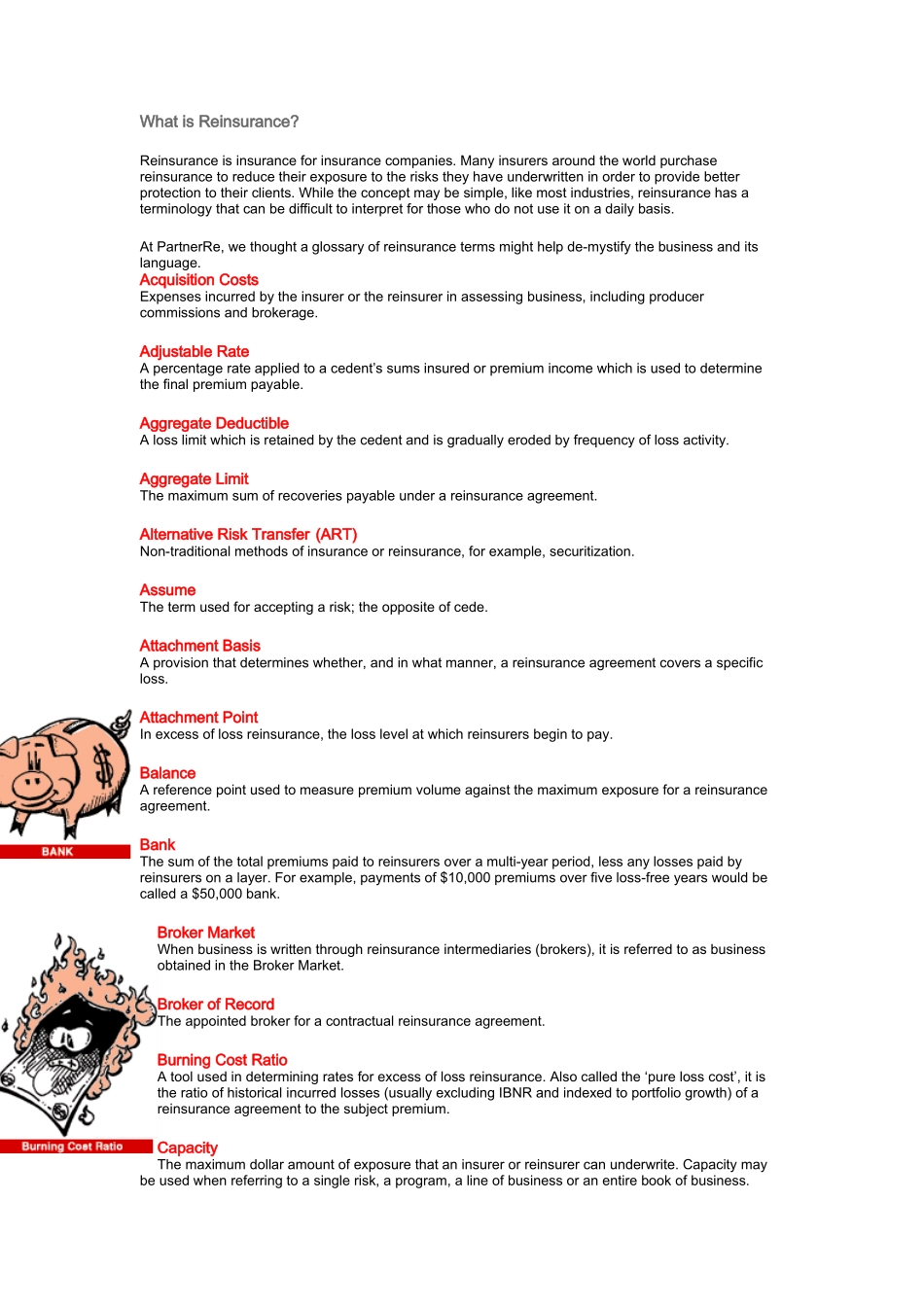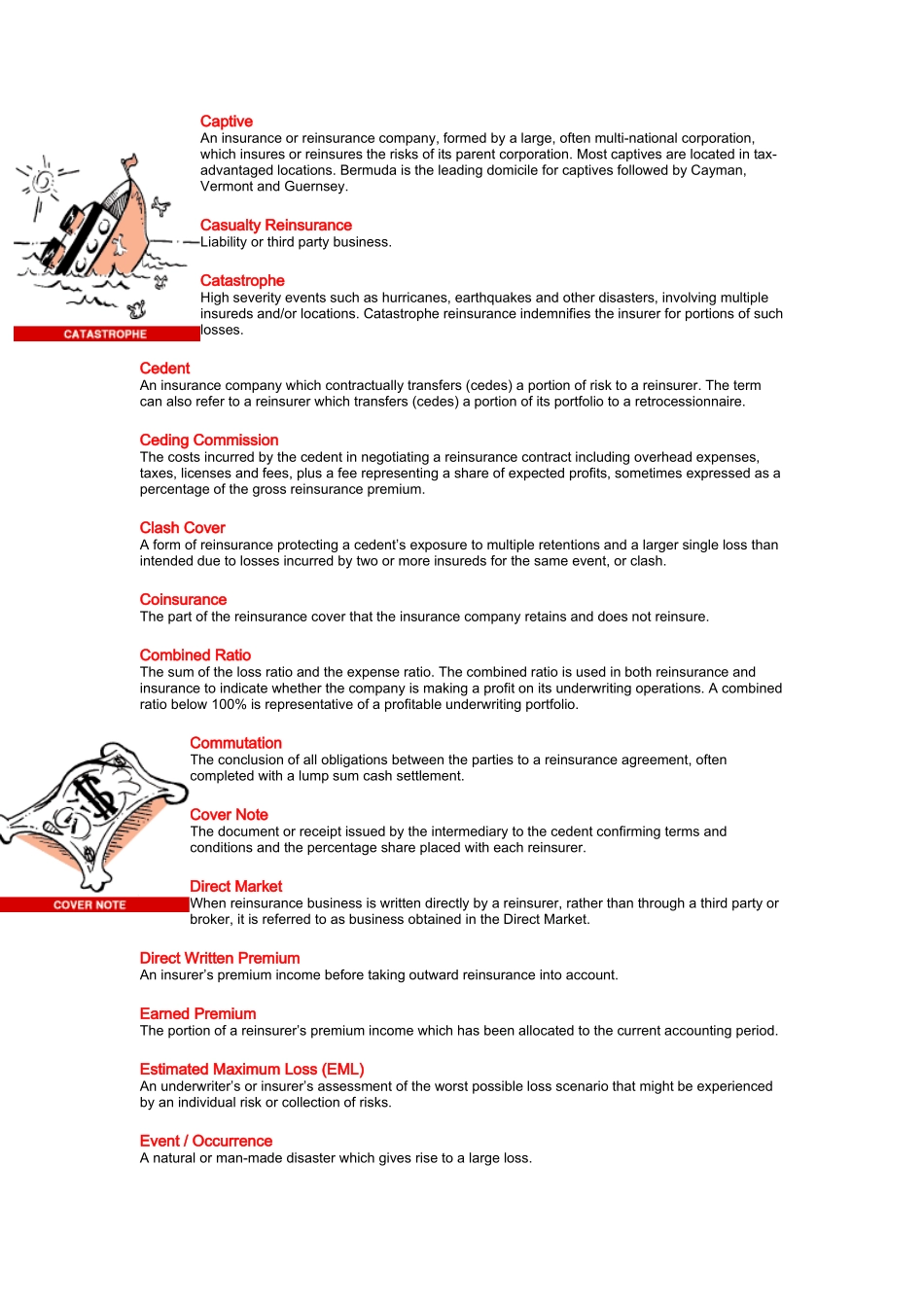What is Reinsurance?Reinsurance is insurance for insurance companies. Many insurers around the world purchase reinsurance to reduce their exposure to the risks they have underwritten in order to provide better protection to their clients. While the concept may be simple, like most industries, reinsurance has a terminology that can be difficult to interpret for those who do not use it on a daily basis.At PartnerRe, we thought a glossary of reinsurance terms might help de-mystify the business and its language.Acquisition CostsExpenses incurred by the insurer or the reinsurer in assessing business, including producer commissions and brokerage. Adjustable RateA percentage rate applied to a cedent’s sums insured or premium income which is used to determine the final premium payable.Aggregate DeductibleA loss limit which is retained by the cedent and is gradually eroded by frequency of loss activity.Aggregate LimitThe maximum sum of recoveries payable under a reinsurance agreement.Alternative Risk Transfer (ART)Non-traditional methods of insurance or reinsurance, for example, securitization.AssumeThe term used for accepting a risk; the opposite of cede.Attachment BasisA provision that determines whether, and in what manner, a reinsurance agreement covers a specific loss.Attachment PointIn excess of loss reinsurance, the loss level at which reinsurers begin to pay.BalanceA reference point used to measure premium volume against the maximum exposure for a reinsurance agreement.BankThe sum of the total premiums paid to reinsurers over a multi-year period, less any losses paid by reinsurers on a layer. For example, payments of $10,000 premiums over five loss-free years would be called a $50,000 bank.Broker MarketWhen business ...


